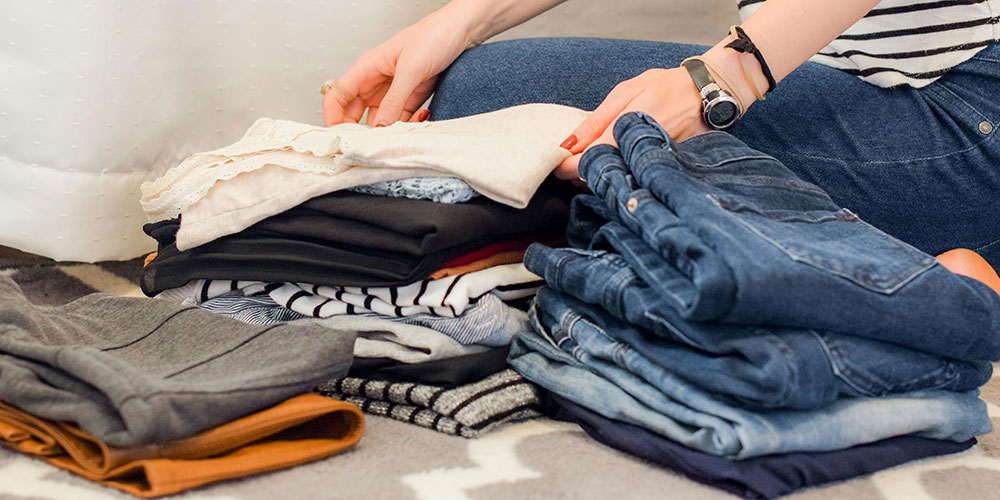
02 Apr April’s Action: Go For Slow Fashion
The fashion industry is one of the five biggest contributors to global pollution. Tradition in the industry indicates that the average garment goes through 101 steps before being wearable— ranging from the harvesting of materials through weaving, dyeing, cutting, sewing, and so on. The good news is that we have 101 opportunities to make each garment more sustainable—not to mention ways to extend the life of our clothing and discard it conscientiously when it’s all worn out.
What is “Fast Fashion?”
There are many ways in which the fashion industry causes pollution, but the craze for “fast fashion”—wherein clothing is created quickly and at a low cost, based on trends of the moment as opposed to more timeless styles—is one of the most harmful. Between the low-quality of the garment and the immediacy of the next fashion craze, many “fast fashion” consumers will discard their clothing to swap out the latest in as little as a month. And those who wear clothing longer and buy fast fashion for its bargain pricing find these items wear out not too long after that.
This quick turnaround is a major reason the average American discards 80 pounds of clothing annually, leading to 3.8 billion pounds of textile waste sent to landfills.
Donating used clothes is a great way to continue the life of items that are no longer worn. However, the volume of fast fashion purchases means a lot of low-quality garments are being donated, many of which won’t hold up to a second owner, so they go right to the landfill.
Instead – buy, maintain, and discard clothing with care
So what’s a fashion-forward shopper with a conscience to do? Luckily, the options are many and expanding as the issue of fast fashion comes more to light—and they don’t have to cost you an arm and a leg.
Shop consignment/thrift
It’s a great way to create your own look, save some money, and re-use what is often perfectly good and very well-made clothing. Check the FreeportCAN Green Guide for local options.
Another burgeoning way to buy used is the “remade” option from an expanding number of national retailers, such as Patagonia, REI, and Toad & Co. These companies take back worn clothing, repair and refurbish it, and then resell it at more affordable prices.
Buy American-made
Though “made in America” does not necessarily mean made chemical-free and of lasting quality, it at least has been produced with higher labor standards and has traveled shorter distances to reach your wardrobe. If paying for durability and quality is simply not in your budget, buying American can be a more accessible option (and many more mainstream and affordable American-made companies offer organic cotton).
Repair before you replace
Slow down your fashion needs by having your clothing repaired instead of replacing it. Find a trusty tailor in your area, or learn to do-it-yourself! Many mainstream fabric stores offer lessons, as do some local businesses and fiber studios.
Recycle damaged or worn items
For clothing that doesn’t have enough wear left to donate or consign, you can recycle it via an Apparel Impact bin—or check out ship-from-home options like Take-Back Bags. Or, save it for household uses like cleaning rags and crafting.
You can find many more resources for purchasing, repairing, and recycling your clothing in the FreeportCAN Green Guide. And, for even more inspiration, save the date for Freeport’s first Planet Friendly Fashion Show, to be held on May 31st! Check back here soon for more information!


